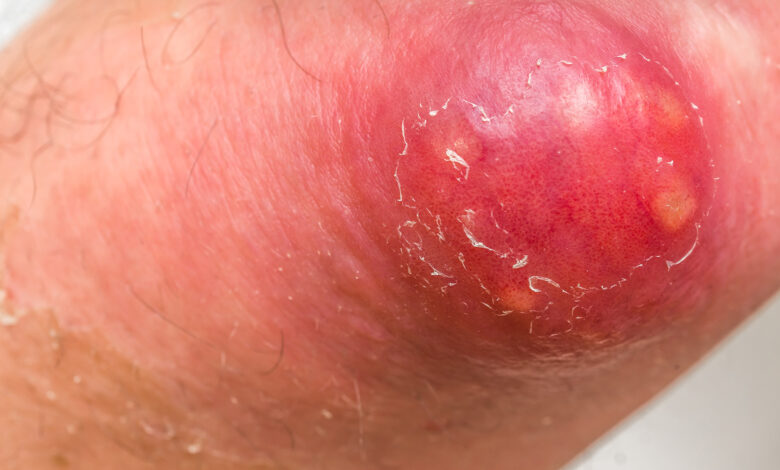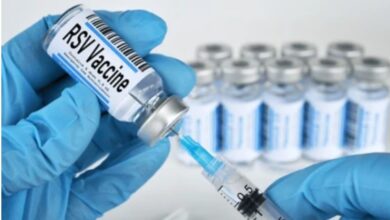BOILS: Pus, not Water!

The surface of human skin is colonized by millions of bacterial organisms. Staphylococcus, or Staph for short, is the most common type. There are two “species” of Staph present on our skin—Staph epidermidis and Staph aureus. S. epi, as it is known, is not a pathogenic organism, ie. it is not a disease-causing bacterium. The other variety of Staph, S. aureus, is the troublemaker. When our skin surface is scraped or cut, Staph aureus invades the wound and travels down hair shafts into the base, or follicle, where it lives and multiplies until it forms a Boil.
Boils are the tender, painful, pus-filled, raised, red bumps that can appear anywhere on our bodies, but seem to favor the face, neck, buttocks, shoulders, and armpits. Boils differ from pimples which are smaller, are found only in the surface layers, and clear up on their own. Boils penetrate into deeper layers, are larger, quickly fill with pus (white blood cells), and cause more tissue damage. Other names given to boils are Furuncle (a single boil), Carbuncle (a cluster of connected boils), and Abscess (a larger infected area).
Anyone can have a boil. But diabetics, patients on immunosuppressive drugs, chemotherapy patients, and patients whose hygiene is poor are more likely to have them. Boils can be prevented by careful bathing, showering, careful laundering of clothes, bedding, and towels, and by anything that reduces the number of bacteria on the skin surface.
When a boil starts, or at least if you suspect you’re developing one, immediate application of warm compresses, or soaking the affected area in warm water, will help to localize the infection (make it coalesce into one spot) and bring it to a head. Compresses should be applied for at least 20 minutes several times a day. Often the boil will burst and drain on its own, and if it does, you’re well on the way to healing.
Boils can cause fever, swollen lymph nodes and lead to more serious infections if the person’s immune system is suppressed for any reason. Everything is worse for diabetics, and boils are no exception. The infection from a boil can enter the bloodstream and lead to septicemia (a generalized bacterial infection in the blood).
The treatment for any boil, furuncle, carbuncle, or abscess is incision and drainage (I & D) of the infection. Making an incision in the surface and draining the pus is curative. I & D is more effective and easier if the doctor can wait until the surface of the boil thins and softens, or as it’s called, becomes “fluctuant.” Larger boils may require packing with iodine-soaked gauze to keep the incision open and permit continued drainage. After a few days, the packing can be removed, the cavity irrigated with sterile saline, and healing should progress.
At the time of I & D, a sampling of pus can be taken for culture to determine the causative bacterium. Antibiotics are usually started right away, but since it takes 48 hours to obtain culture results, the decision to continue treatment longer has to be delayed until those results are back. If the culture shows worrisome bacteria, however, you’re already 48 hours into treatment.
Bottom line is that any boil will improve after an I & D is done. Opening the surface and expressing the pus contained within allows the body to begin the healing process. Boils are very painful anywhere they are, but are especially painful in the anorectal or tailbone areas. The worst pain I can remember having was the infected tailbone cyst (pilonidal cyst) I had in December, 1964. It hurt to walk, sit, and lie down. After the doctor drained it (excruciatingly painful), it began to get better immediately.
Acne cysts, sebaceous (oil gland) cysts, eyelashes (stye), and any hair follicle can get infected and form a boil/furuncle. The treatment is the same. One always hopes these things will drain on their own, but often they don’t.
Dr. G’s Opinion: Patients with boils appeared in my office 3 or 4 times a month. Many an I & D was done. Many a boil cavity was packed with iodoform gauze. And all of them healed just fine. If the boil gets too large before it’s drained, a lot of tissue damage can occur, and the boil will heal with a scar or a sunken indentation. That’s a small price to pay for pain relief, though.
Practicing good hygiene is once again the point of emphasis. Clean clothes, clean bedding and bath towels, and clean personal habits (bathing, showering) help prevent these preventable infections.
References: https://www.mayoclinic.org/diseases-conditions/boils-and-carbuncles
https://www.webmd.com/skin-problems–and-treatments/guide/boils




